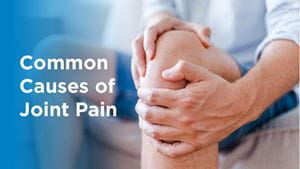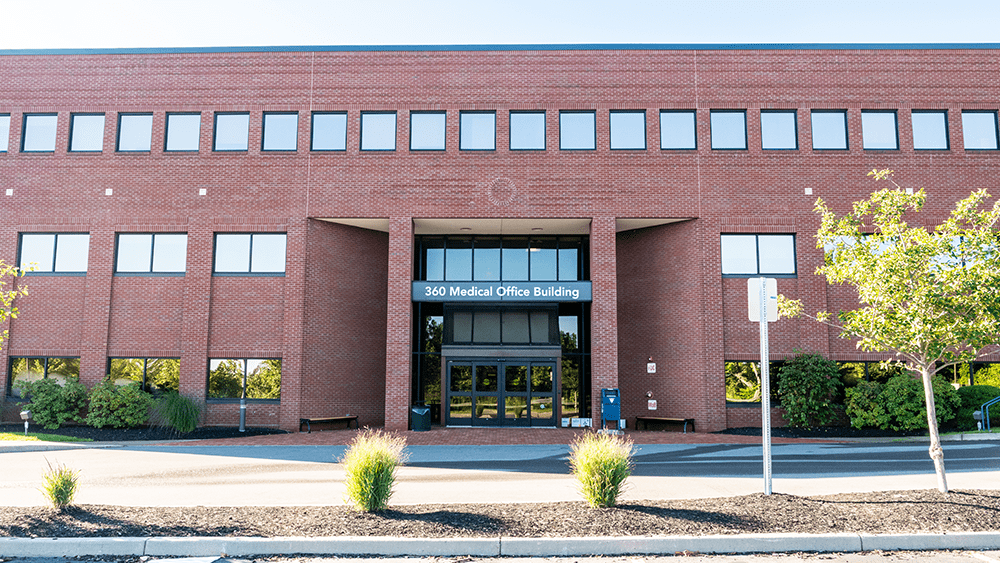
Joints connect your bones together, help you move around, and support you as you move throughout the day. Damage to your joints from injury or disease can cause joint pain, hamper your movement, and keep you from enjoying your favorite activities.
Dr. John Klibanoff, an orthopedic surgeon at Rochester Regional Health, reviews some of the common causes of joint pain.
Osteoarthritis is the most common joint disorder. It occurs when the cartilage between two of your bones break down, so the exposed ends rub together. This results in swelling, stiffness, and pain. Osteoarthritis can be caused by high-impact sports, obesity, injury, and overuse.
Rheumatoid arthritis is an autoimmune disease that causes joints and the tissues surrounding the joints to inflame. While RA is most common in middle age, it can occur at any age and usually manifests as morning stiffness that lasts more than one hour, as well as pain and swelling in your hands, feet, and wrists.
Bursitis occurs when your bursae is inflamed. Bursae is the fluid-filled sac that cushions your bones, tendons and muscles near your joints. The most common areas for bursitis are the shoulder, elbow, hip, and knee.
Gout is a common cause of arthritis that causes severe pain in one joint—usually a toe or other joint in the foot or ankle. Pain and inflammation occur in the affected joint when too much uric acid forms and deposits. Typically, the first symptoms of gout are a sudden and painful swelling, often at night, and commonly with redness.
Osteoporosis is the most common bone disease. It results in your bones becoming fragile and more likely to fracture or break over time. Common signs of osteoporosis include height loss and a stooped posture. Treatments include medications, a healthy diet, and exercise to help prevent bone loss or strengthen already weak bones.
Patella Femoral Pain Syndrome (PFPS) is a condition of the kneecap characterized by a rough or soft spot on its cartilage surface. In the past, it has been called chondromalacia patella, runner's knee, or dashboard knee. It causes pain, giving way, stiffness and a feeling of catching or grinding. Going up and down stairs is a bit difficult, and sitting with your knees bent or squatting is very uncomfortable. It makes the knee "give out," grind, or pop loudly.
Small doses of anti-inflammatory medicines can often decrease swelling, stiffness and pain. Other treatments may include injections, ice, rest, and physical therapy. Taping and a brace to stabilize the kneecap also can be helpful.
Deep in the shoulder are a group of tendons and muscles called a rotator cuff. They help stabilize the upper arm bone in the shoulder joint and rotate the arm. The biceps tendon is also present in front of the shoulder.
When the arm is raised repeatedly over the head, the tendons rub against the underside of the shoulder bone and become irritated. The tendons swell, leaving even less space between tendons and bone. The irritation creates more irritation. It is much like a rope being drawn again and again across a craggy rock.
Excessive wear on the rotator cuff can lead to severe irritation, roughening and eventually tearing of the cuff. An irritated rotator cuff is felt as a clicking or popping in the shoulder from a ragged piece of the cuff sliding under the shoulder bone, and arm weakness. Occasionally, injuries or infections can all lead to arthritis, although arthritis of the shoulder is less common than in the knee or hip. Arthritis in the shoulder causes a roughening of the joint from worn cartilage and loose fragments of bone.
